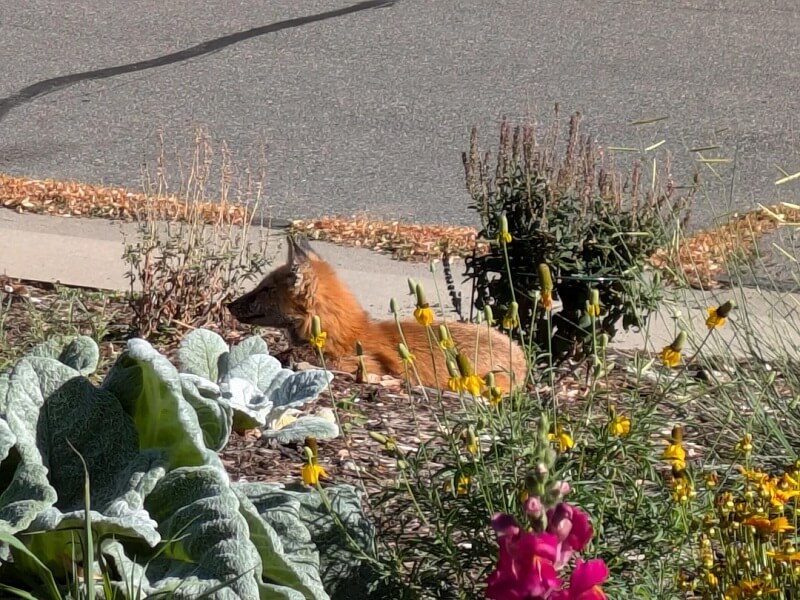Adding native plants to your yard is a great way to attract pollinators and local wildlife.
After switching to a native-plant lawn, a homeowner shared an image of a surprising visitor in their front yard garden: a fox.

According to the homeowner, the fox was not skittish and was simply resting among their native plants. While the homeowner was happy to see local wildlife enjoying their yard, they were concerned the fox had a mild case of mange.
"Sadly the wildlife rehab is all full up because of recent fires so they can't rescue it at this time to treat it," wrote the homeowner. "But [Animal Control] said the grasses in my garden are nice and tall so he probably feels safe in my garden!"
Redditors in the r/NoLawns forum appreciated the native lawn post and were happy to see the fox resting, considering its possible condition.
"The mange is sad, but that happy little snooze in picture 3 is so blessed and heartwarming," wrote one user.
"Love the yard!" commented another Redditor. "I feel bad for the little guy."
Native plant lawns are not only beneficial for the local wildlife but also for your wallet. Since native plants have adapted to the local environment over the years, they can better withstand harsh weather conditions, such as droughts. Compared to grass lawns, native plants require less maintenance and water, saving you time and money down the line.
In fact, after switching to a native plant lawn, you can save up to $275 on water, $50 on fertilizer, and $50 on pesticides and weed control each year.
Native plants also attract key pollinators, such as butterflies and bees, promoting the overall growth of your garden.
Redditors continued to discuss the fox resting in the homeowner's front lawn.
"Head over to r/wildliferehab," suggested one user. "They should have advice for mange."
Join our free newsletter for easy tips to save more and waste less, and don't miss this cool list of easy ways to help yourself while helping the planet.









